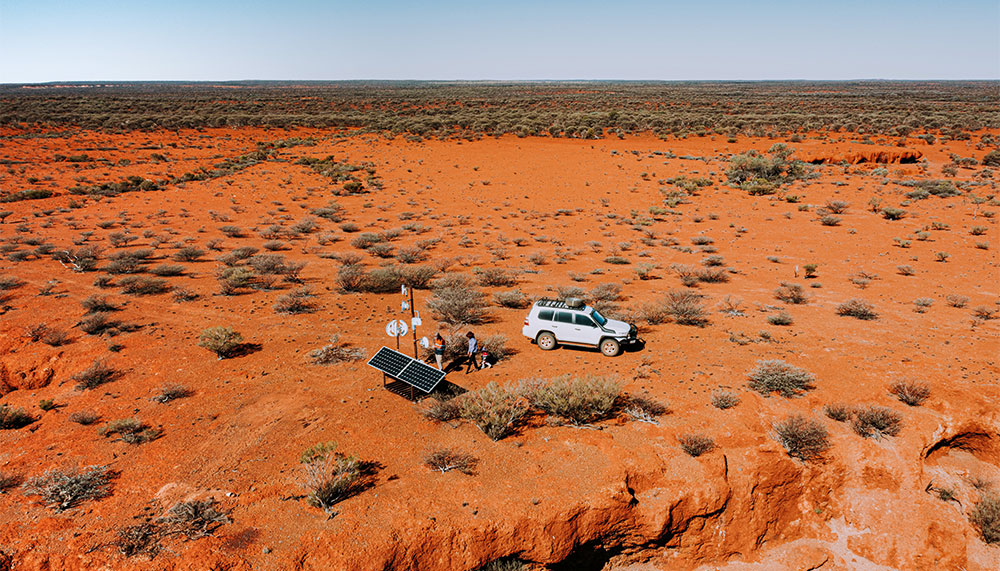Getting rural Australia connected is now more important than ever.
Story Amanda Burdon Photo Rosie Henderson
It’s 6am and Andy Keatinge opens his phone to check on the whereabouts of 150 black Angus grazing in a nearby leased forest. Mobile coverage on his family property near Jugiong, in southern NSW, is “2 bars on the hill and zero everywhere else”, but a series of dots soon starts pinging on his app, showing the precise location of the satellite-tagged animals. “Mustering these cattle used to take 8–10 days; now we can do it in 4 hours,” Andy says. “The 4 wi-fi towers we’ve had built have been incredible for doing business on the hop, for peace of mind and efficiency.”
By mid-morning, ladies are limbering up in the Begonia Golf and Sports Club, in southern Queensland. Thanks to a Foundation for Rural and Regional Renewal (FRRR) grant, the clubhouse now has an nbn satellite connection that beams in free Rural Yoga classes for those keen for “the company, a stretch and a giggle”. The hub is where the community connects through sports, functions, playgroups and to watch the footy in winter. “But it’s in a mobile black spot,” says local Danille Koster. “Having the satellite connection is really important for safety, but it has also opened up opportunities for our little community. We have wi-fi calling and EFTPOS and can now stream speakers for luncheons and other events.”
On the other side of the country, bleary-eyed Verety and Ysobel Carmody are making the short stroll to their schoolroom on Prenti Downs station, in the Mid-West of WA. Soon they’re logging into the School of The Air (SOTA) in Kalgoorlie to greet distant friends and begin lessons. Thanks to their ingenious father Jack, this is all seamless. The solar-powered fixed wireless network he rigged up – a 13m tower made of recycled drill rod connected to 7 repeater stations – is bringing more than educational gains. “We have high-speed connectivity to our water points and can livestream videos back at the homestead,” Jack says. “It’s faster than some places in Esperance and Kalgoorlie on 5G and borderline good enough to play computer games out at the tanks. And the SOTA lessons are not always dropping out.”
Across Australia, families, businesspeople and communities depend on fast, reliable and affordable connectivity. Some say it’s a human right now that so much of our lives and work – not to mention government services and banking – has migrated to the digital realm in the wake of COVID. But, while dependable mobile and internet services have never been more vital to public safety, business, education, health and social relationships, they are by no means guaranteed throughout rural, regional and remote Australia.
“While connectivity in regional Australia is improving, there’s an urgent need for a strategic investment framework for telecommunications infrastructure,” says Kristy Sparrow of the volunteer group Better Internet for Rural, Regional and Remote Australia (BIRRR). “Currently, it’s a bit like a patchwork quilt of technologies that are not stitched together. There has been significant investment, yet we still have people who can’t get connected or stay connected, even though access is available. We call it the bush broadband jungle. Trying to navigate your way through is hard work.”
This story excerpt is from Issue #149
Outback Magazine: June/July 2023










